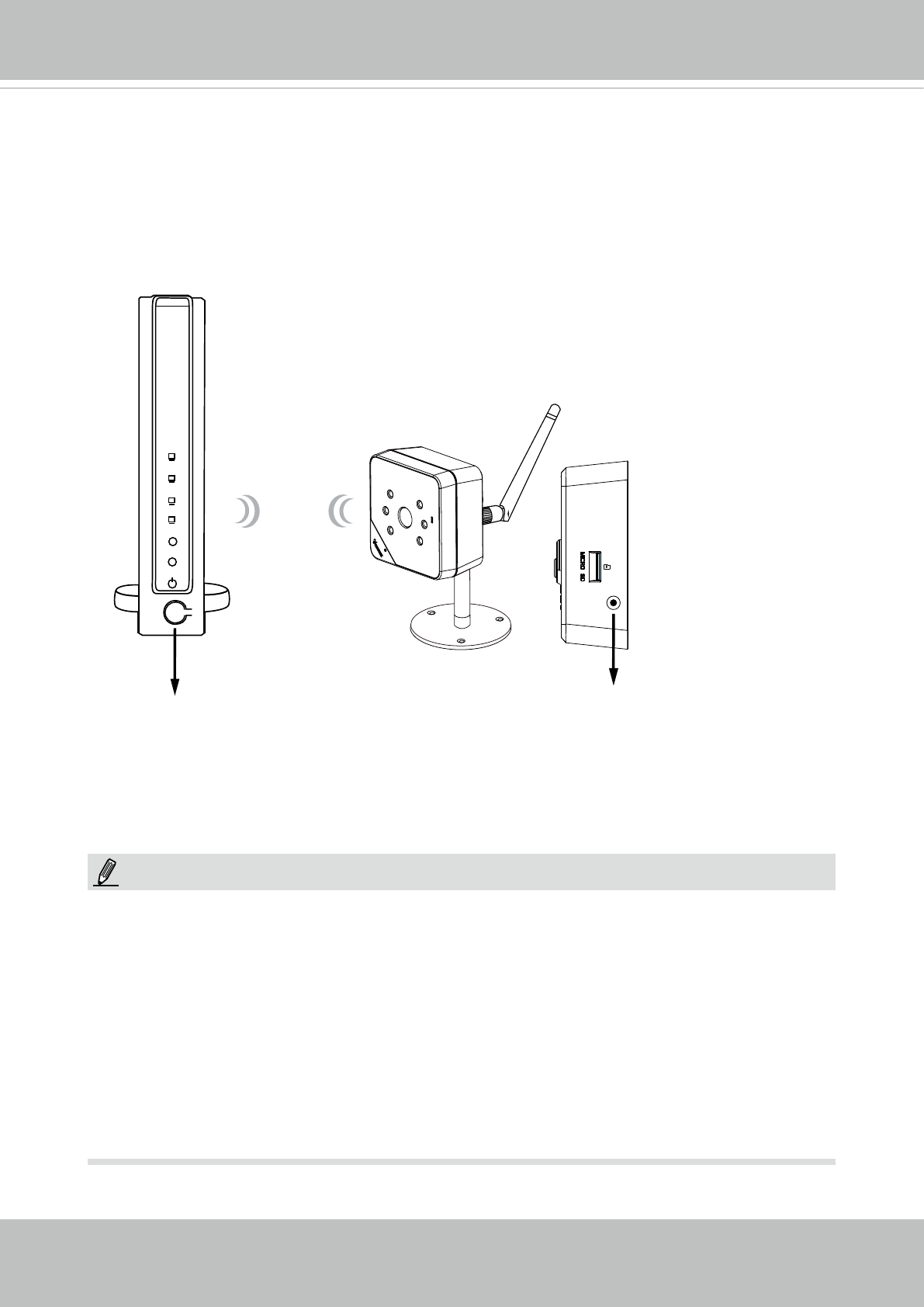
VIVOTEK
User's Manual - 19
WPS
WPS
1� Make sure your AP (Access Point) and Operating System support WPS (Wi-Fi Protected
Setup) functions� WPS enables easy setup with compatible APs�
2. Disconnect your LAN cable, and connect the power cord.
3� Wait for 1 minute for the camera to boot up� Press the WPS button for 1 second� The
front panel LED should blink blue�
4� Press and hold down the WPS button on your AP (some router/AP
will have a virtual button on their management software instead)�
Refer to your AP's documentation for details using its WPS
functions�
When WPS conguration is done, wireless connectivity will be established and the
security encryption, such as WEP or WPA-PSK, will be synchronized with the AP.
Use the IW2 utility to nd the camera. As for IP setting, the camera's use of DHCP or
static IP is determined by your conguration on the network camera via the web-based
conguration of rmware. The camera's default is DHCP.
NOTE:
WPS Button
WPS Button
Wireless AP
1� It is strongly recommended to apply WPA2/AES encryption for access security�
2. WPS may not work if your AP is congured with a "hidden" SSID.
3. If no WPS-enabled AP is detected, and if the camera still can not detect an AP after 2
minutes, the wireless setup will be cancelled. If WPS conguration should fail, wireless
conguration will be cleared. You can then re-try the process above or use a wired
connection to establish a web console and manually congure the wireless settings.
4. If a camera is assigned with a xed IP outside the AP's network segment, wireless setup
will fail�
5. A wired connection always has a higher priority, and hence wireless setup will not take
effect when the RJ45 LAN port is connected� If you want to switch from wired connection
to wireless connection, disconnect the Ethernet cable and reboot the camera.
Wireless Connection: Using the WPS Button
